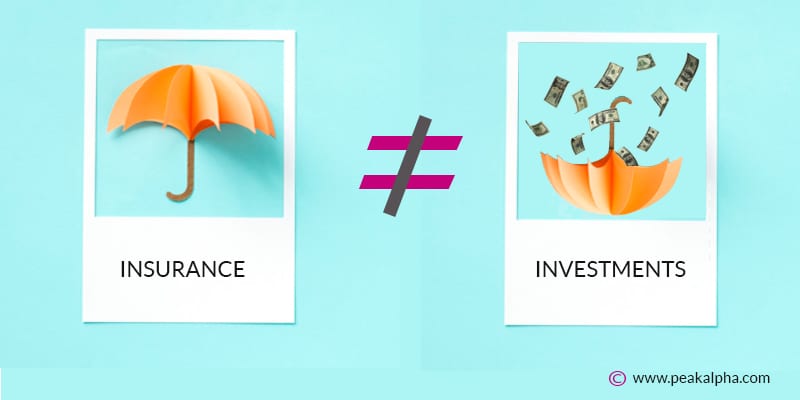- July 23, 2019
- Posted by: peakalpha2023
- Category: Livemint

I am really upset that I paid the premiums on my term plan for 20 years and I am not even dead!” I stared unbelievingly as I heard X utter these words. I wasn’t quite sure what he was upset about. Was it because he had paid the premiums for all those years or was it because he was not yet dead?
I told him that he should be really pleased with the outcome. He had the peace of mind for 20 years that his family would be financially secure in case of his untimely death. And, most importantly, he was still alive and well.
X rebutted saying he would’ve been better off investing the annual premiums that had been “wasted” on the term plan. So, I explained to him that even if I assumed a 10% compounded annual growth rate (CAGR) over 20 years, he would have got about ₹17 lakh on an investment of ₹6 lakh ( ₹30,000 invested each year over 20 years). If his life had been cut short at any time during those 20 years, his family would have got between ₹30,000 and ₹17 lakh. This amount would have been nowhere close to the ₹2 crore that they required to meet the family’s goals. So, yes, X may have spent ₹17 lakh on premiums, which was a cost to him, but the cost of not taking the term cover would have been far higher.
To understand insurance, one must have a basic understanding of the concept of risk. Let’s say I am planning to relocate from India to Singapore and I plan to ship my goods across by sea worth ₹75 lakh. In transit, the following situations may occur: a) My shipment may arrive safely in Singapore; b) My shipment may be lost; or c) My shipment may be wholly or partially damaged in transit. If my shipment is lost or damaged, I stand to lose goods worth ₹75 lakh. My options are the following: a) to absorb the risk i.e. deal with risk of damaged or lost goods and use my funds to replace them; b) eliminate the risk, i.e. not relocate and, therefore, not ship my goods at all; or c) transfer the risk to someone else, in this instance, an insurance company.
Let’s say I go with option c. The insurance company, after assessing the risk of insuring my goods, quotes a premium of ₹75,000. Here, my known loss is ₹75,000. If I choose to absorb the risk by not taking insurance, and my goods arrive safely, I will be financially better off since I will have saved on the insurance costs. However, if my goods are damaged or lost in transit, I will stand to lose ₹75 lakh instead of ₹75,000. The premium of ₹75,000 is a relatively insignificant cost to me but replacing ₹75 lakh of goods will create a huge dent in my finances. The principle of insurance on a term plan or health plan is similar. By paying a series of known, affordable premiums (or “losses”) over the term of the policy, you are protecting large, unknown, unaffordable future losses. It’s all about balancing what you can afford to pay versus what you can’t afford to lose.
If the value of the goods I was shipping was small, I may have preferred to self-insure. I could have earmarked a contingency fund for replacing the lost or damaged goods. If my goods arrived safely, I would have saved on the insurance costs. If they didn’t, I could replace them with my contingency fund, but given I had already planned the potential outflow, it would not dent my overall finances in a significant way.
Self-insuring is fundamentally less expensive than buying insurance, but it makes sense when the insured value is small. For example, you can create a fund for replacing the contents of your house in case of theft or fire (assuming the contents are not very valuable) or you may decide to self insure a part of your healthcare costs. A health insurance plan with a deductible is such an example, where you self-insure up to a limit and consume the insurance cover after you cross the threshold.
You require insurance to protect yourself against low-probability but high-impact event. You should not buy insurance for high returns. If you make a lot of money through your policy, the counter-party or the insurance company, will lose money. If the insurers keep losing money, they will eventually run out of business, which is not beneficial for either you or the insurer. People who invest in guaranteed plans should be mindful and realistic of the returns they expect on these policies, regardless of the guarantees provided by the insurance company. Your insurance premium includes growth, mortality costs, overhead costs and the profitability of the insurance company. If you don’t need insurance, you would be better off investing in an instrument where you control its growth and avoid the costs and profit margins of the insurance company.
X called me the other day to tell me that he had purchased an endowment plan that guaranteed an alarmingly high benefit over 30 years. “At least I will get good returns, unlike the term plan,” he declared proudly. I could only sigh and wish him good luck.
